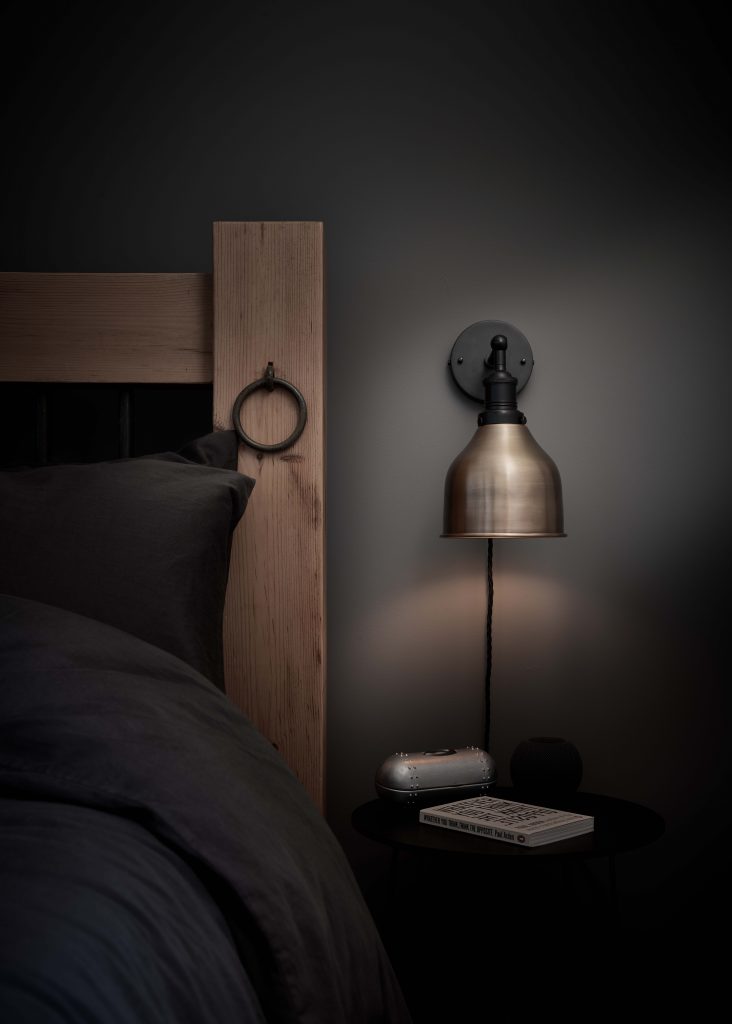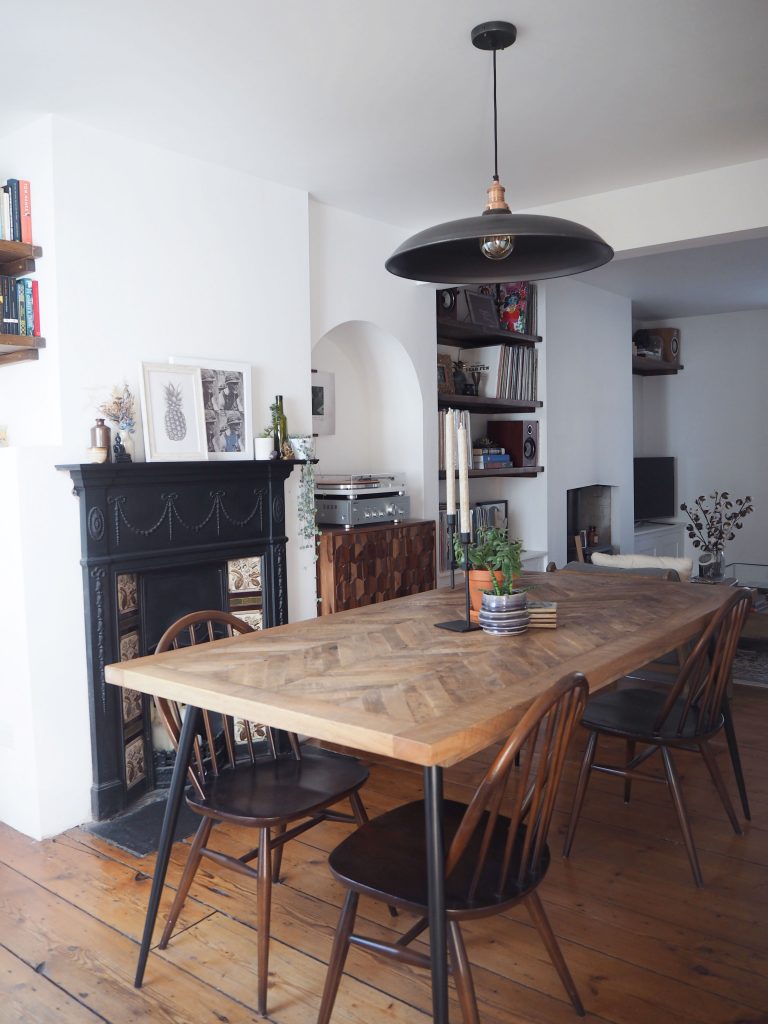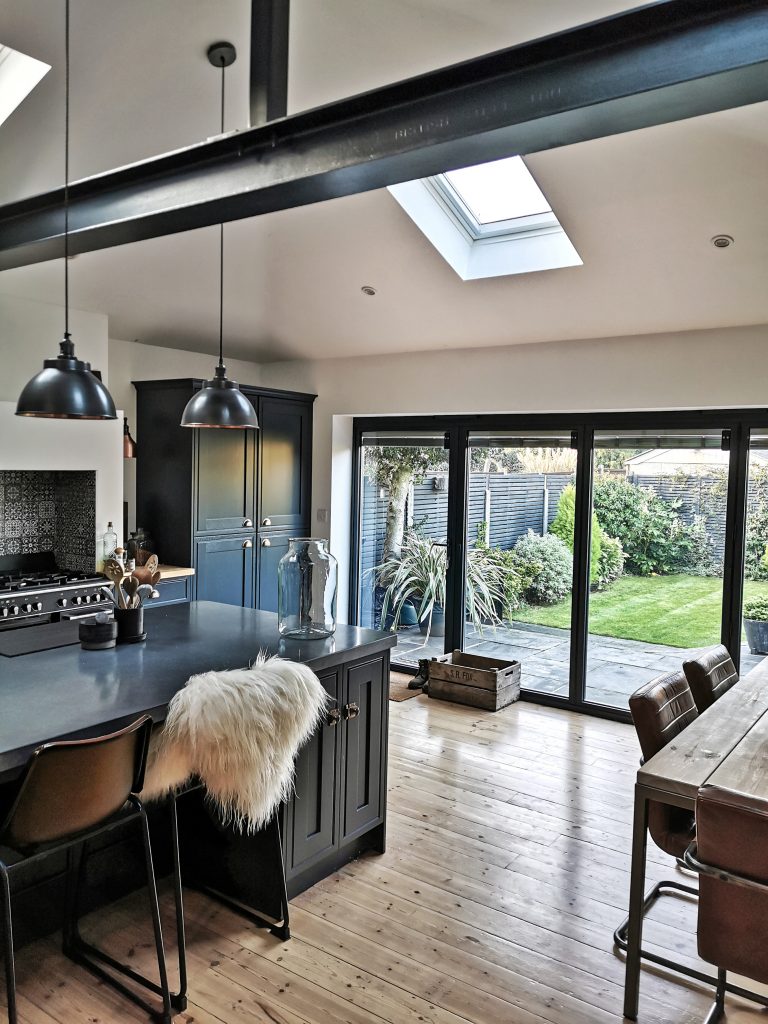- What is industrial design in interior design?
Industrial style decor comprises of stripped back architectural details, including the use of exposed brick, concrete, raw metal and wood, as well as salvaged materials. Industrial design takes inspiration from the lofty look of warehouses and factories, creating the perfect juxtaposition of rustic and modern, rough and homely. In terms of interior design, it is all about achieving a raw edgy style that looks unfinished, yet cohesive and unique.
- Where did the aesthetic come from? Was it a reaction to something? Any idea what year it became prominent or when it was popular?
It was back in the 1970s when the now infamous industrial style really took hold. At that point, many warehouses, mills and factories were turned into homes for people to live in and rather than concealing the raw elements such as the rough bricks, exposed metals and pipework, Interiors Designers decided to embrace them. People loved this new honest, authentic look with its clean lines and open spaces, and 50 years on it remains as popular as ever. In today’s busy, frantic world, this pared back, simplistic and unfussy style provides a much-needed calm feel to our homes, something we all welcome at the end of a hectic day. Searches for ‘Industrial Décor’ have doubled in the past 5 years alone, proving the look is certainly standing the test of time – another feature which makes it so appealing.
- Were there any founding figures of the style?
Although it’s very difficult to pinpoint, many people often consider the first industrial designer to be architect Peter Behrens, who was noted for his influential role in the development of modern architecture in Germany. Beginning in 1907, Behrens was the artistic adviser for AEG, for which he designed not only industrial buildings but also small electrical appliances.
Another influential figure is considered to be Albert Kahn. He led a change in industrial design that brought factories, warehouses, and industrial spaces more in line with what we know them to be today. In the earlier days of manufacturing, different operations were often housed in different buildings. Kahn called for more efficiency and used new building materials to create massive structures that could house all operations under one roof.
- How does industrial décor make a space feel? What does it achieve in an interior?
Industrial decor blends seamlessly with any style, be it sophisticated, traditional, or contemporary. The clean lines and statement elements of industrial spaces act as a perfect contrast to whatever they counterpoint. It’s neither too cold nor too warm, but rather helps strike the perfect balance. Despite its simplicity and minimal design, industrial style manages to create a statement interior. The juxtaposition of modern vs. vintage makes for a great, layered and considered living environment. Industrial style décor gives the homeowner the opportunity to customise the look using furniture and decor that are completely unique them and to their home, creating a beautiful and personal space.
- How can a space be made to look industrial? Where to start?
The industrial look remains a timeless style for any interior and can effortlessly add a character to any room. Industrial interiors look their best when they embrace a unique finish that highlights individual character. Once you’ve stripped your interior bare, make sure you add touches of your personal style to transform it into a place that reflects you.
When creating an industrial style interior, ‘raw’, ‘exposed’ and ‘unfinished’ are key themes and if you keep these in mind you won’t go far wrong. In terms of colour, a neutral toned-down palette works best for this look but don’t be afraid to add in the odd splash of black or dark grey, which looks great when set against metallics. Leave walls naked too, celebrating the raw brickwork or concrete, harking back to those original industrial buildings of the 1970s.
Focus on keeping the layout as open as possible. It makes the room appear spacious and more reminiscent of the industrial era. To prevent the space from looking overwhelmingly large, thoughtfully arrange industrial style furniture in groups to break up the space – this also helps to achieve the popular broken-plan living trend.
Quality natural materials play an essential role in making the interior authentic, so stick to functional materials such as metal, timber, bricks and tiles found in the industrial era. These will all help to create that all-important balance between rough and smooth textures, another key element in industrial style. To achieve the industrial look with your furniture, look for pieces with exposed legs or arms that enhance its bare functionality. Dark toned materials, such as leathers and woods, also pair particularly well with metal industrial features.
Lighting plays an important part in industrial style interiors too and can be used to highlight features such as exposed brickwork, wooden beams or visible pipes. Our vintage style industrial lights take inspiration from those used to illuminate factories in years gone by, and our ribbed glass shades, cool metallic colours and bulb cages are popular choices by those wanting to create an industrial vibe. Alternatively, for a true minimalist look, try a bare bulb, complete with exposed wires, which can be hung either singly or also look great in a cluster.
Industrial style is relatively undefined meaning that you can have fun becoming your own industrial interior designer.
- What does industrial interior design look like?
The industrial look is all about practicality and versatility; this is what gives industrial interiors their unmistakable flavour. So, when deciding how to decorate your space, the practicality of your chosen pieces should always be at the forefront of your mind.
When it comes to furnishings, an industrial interior requires features to be practical and uncomplicated. Clean lines, simple forms and stark contrasts are a must, but this simplistic approach does not mean you have to compromise on comfort.
Living areas are particular spaces where you should be able to relax comfortably; it is possible to make a warm, welcoming environment even if practicality is prioritised. Make use of a few key textures while sticking to a cool, neutral colour palette. Try to avoid too many accessories, like an excess of cushions.
It should go without saying, but metal fixtures are a vital component of this look. Depending on your overall theme, handcrafted metals can add to the feel of rough, exposed loft spaces brilliantly but can also provide a sleek, refined look perfect for a range of spaces.
- How has industrial style evolved?
Industrial style has evolved over time due to its flexibility to mix well with other interior design styles and we often see industrial elements being brought into different, sometimes contrasting styles. For example, blending elements of industrial style with a Scandinavian interior design works seamlessly as they both have common traits such as neutral tones, mixing textures and functionality. Japandi interior design also blends well with the industrial style as raw materials such as brass help to create that tranquil feeling that Japandi is renowned for.
Some of the latest designs for interiors are all about embracing a dark, luxurious feel, which also works brilliantly with industrial style design. It’s simple enough to create at home, whether it’s for a complete renovation project or updating a few elements within a scheme. For best results, careful attention to the lighting is key. Matt black designs are ultra-versatile and can complement any interior style – classic, contemporary, Scandi, mid-century, industrial and everything in between; it’s like a piece of jewellery that accessorises and blends seamlessly within any décor.
There are many ways the dark interior trend can be incorporated into homes without the risk of dating the interior in years to come. The trend lends itself well to a timeless design, as it can include classic features which never go out of style, such as lighting. Raw materials, especially high-quality metals, is one of the main features of industrial design that is here to stay. The latest trend combines the raw and rusty, with the sleek and modern. This transition freshens up the signature industrial aesthetic, providing an excellent opportunity for creative expression. When it comes to creating a feeling of luxury, dark tones are where it’s at. We see dark kitchens being on the hot list, as well as dark-toned living areas and bathrooms too.
.
- Is industrial design still in style/going out of style?
Industrial design is timeless and will never go out of style, but it is constantly evolving. There is less emphasis on the rusty and rough, with a clear shift towards the premium, luxurious and high-quality materials that will stand the test of time.
Recent events have given homeowners the chance to appreciate every aspect of their homes a little bit more. While we have always cared for our home interiors, we have seen much more attention focused on creating the much sought-after inside/outside look and how we can strengthen the connection from our home to our outside space.
With more time being spent at home, we demand more from our spaces, both inside and out. The expectations for our outdoor living space now hold the same design opportunities as our home interiors and consequently we have seen an emerging trend to take the industrial look into outdoor spaces. There has been a huge demand for IP65 rated industrial lighting being used to create chic outdoor kitchens, bars or garden terraces for example.
Marketa Rypacek
Managing Director, Industville Ltd




